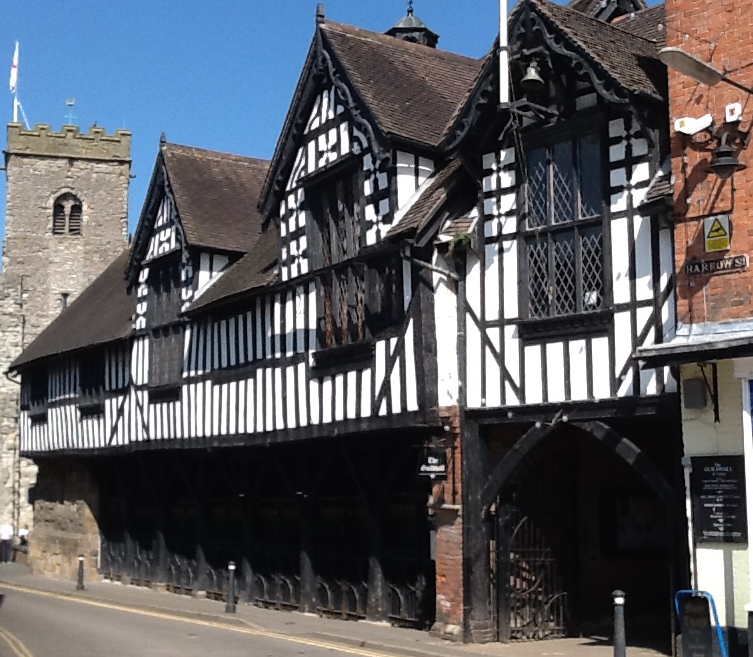
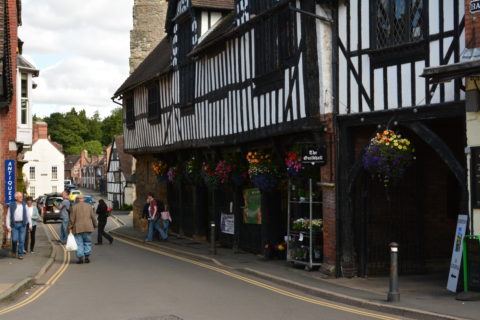
The Guildhall on market day with fresh fruit, vegetables and flowers at the Buttermarket
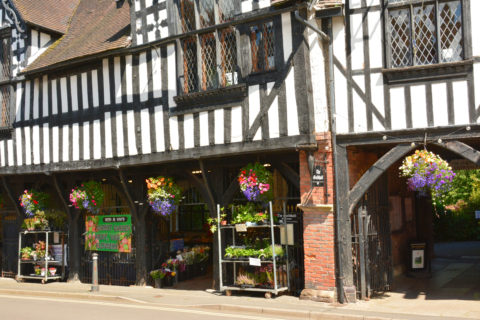
Visiting the Guildhall – Free Admission
The Guildhall is a gem not be missed. It is open to the public between April and October on Friday, Saturday, Sunday and Monday, 11am to 4pm. Various free exhibitions take place in the Court Room throughout the year, and more information about these can be found below.
EXHIBITIONS IN THE GUILDHALL 2024
April – Broseley Art Group Mixed Media
We welcome the Broseley Art Group for the first time.
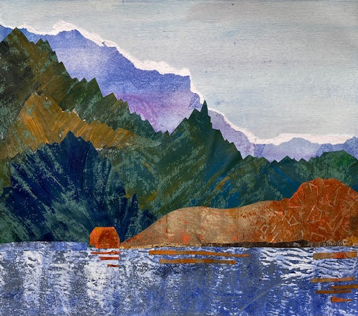
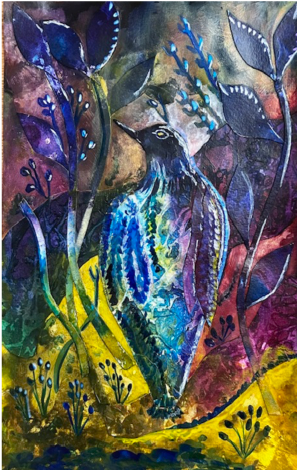
May – Bernard Murphy Life Drawing
Bernard studied drawing and painting at Bournville School of Art. He then specialised in ceramics and gained considerable experience in industrial ceramics. Having stopped painting and drawing in 1962, he has recently rekindled his enjoyment of the intellectual and creative process.
The majority of his exhibition will be watercolour landscapes with a couple of portraits.
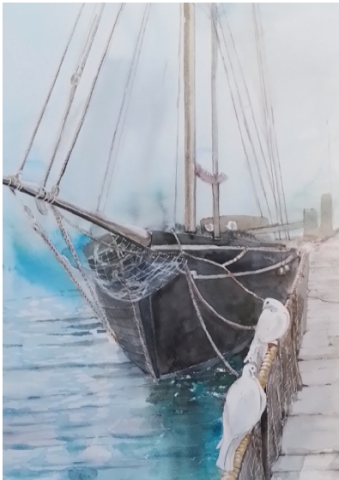
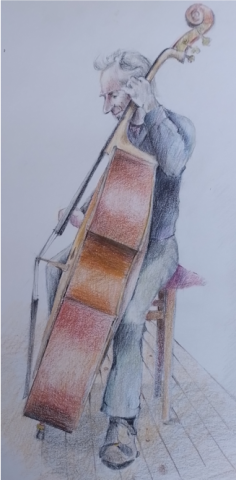
June – Much Wenlock Artists Mixed Media
A gathering together of some of the artists who live in Wenlock area. These include the artists from the Wenlock U3A group, the ‘Farm Art’ group and other independent artists. It Includes a collection of paintings in watercolour, oil and acrylic covering a wide array of subjects.
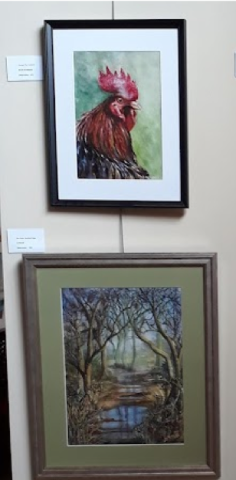
July – Shelley Wingrove Lino Prints
From my studio on Wenlock Edge, and my walks with my lurchers and the Little Black Mare, my work is inspired by the breath-taking natural beauty of my surroundings.
My collection consists of limited edition, hand-cut lino prints, Collagraphs and Etchings.
‘ I love detail. Nature and detail are a general theme running through my work. I love to watch the light at play on the trees and the fields. I will capture scenes or just little details in my sketchbook, or perhaps collect a leaf or some other treasure.

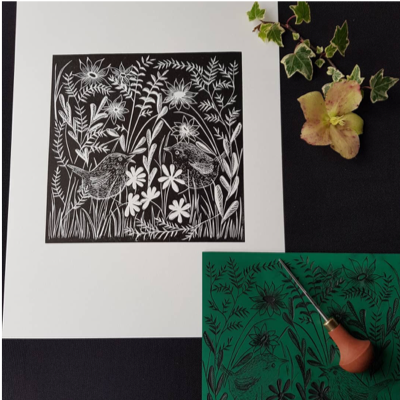
August – Clare Wassermann Oil & Acrylic
Clare Wassermann uses the symbolism of animals and nature, as part of an ongoing investigation into the concept of liberation and alchemical transformation towards internal freedom. There is always an overriding message of peace and unity.
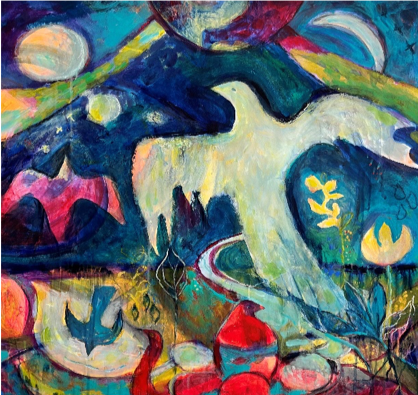
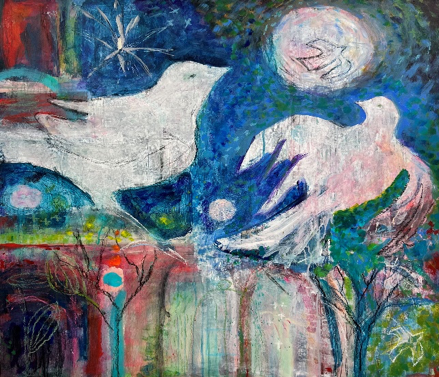
September – International Touring Tapestry Exhibition Textiles
Verve is a Tapestry Touring International exhibition.
Tapestry weavers from England and New Zealand come together in this fourth exhibition of small format hand woven tapestries.
Weavers come from a diverse range of creative backgrounds, from novice weavers to those with international reputations.
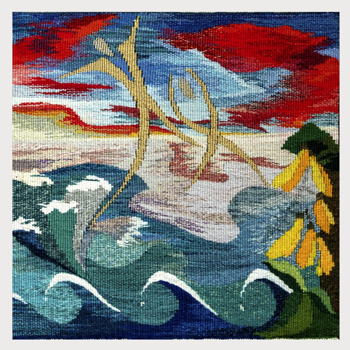
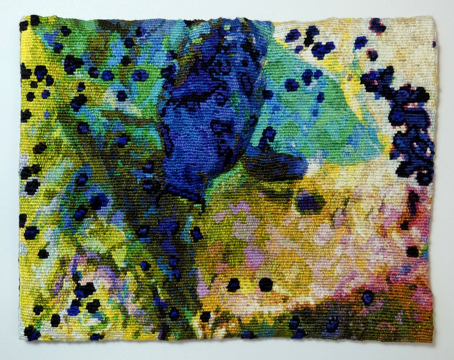
October – Society or the Protection of Ancient Buildings
RESCUE, REPAIR, REGENERATE: Building Conservation in Shropshire
This exhibition looks at major conservation projects by architects in Shropshire, including those who won annual Scholarships from the Society for the Preservation of Ancient Buildings (SPAB)
These are shown alongside the drawings and notes of the current SPAB scholarship holders.
Since 2021, winners of the SPAB scholarship have spent their final week staying at Wenlock Abbey, studying the town and its fascinating streetscape as well as local country houses and craft skills.
This exhibition, in showing the results of their studies in the area, hopes to underline a continuing tradition, not just of preservation but also the regeneration of Shropshire’s architectural heritage.
EXHIBITIONS 2025
April – Shropshire Scribes Calligraphy
May – Deborah Stone & Sally Cartwright Mixed Media & Textiles
June – Much Wenlock Artists Mixed Media
July – GAWIE Punjabi Group
August – Jo Jukes Mixed Media & Enamelling
September – Victory Art Group Mixed Media
October – Liz Carr Photography & Watercolours
Details of the Guildhall are available in our Guildhall leaflet
GUILDHALL EXHIBITION APPLICATION
If you have any further enquiries regarding the Art Exhibitions please contact the
Guildhall Custodian
Much Wenlock Town Council Office
Telephone: 01952 727509
Email: guildhall@muchwenlock-tc.gov.uk
Previous Exhibitions
EXHIBITIONS 2023
April
‘An Exhibition of Calligraphy by Shropshire Scribes, inspired by Medieval Manuscripts and the Natural World, using a variety of materials and techniques’
May
A selection of portraits and landscapes by Artist Hannah Boyd. Hannah is an Artist and Art Tutor working from her studio the Art Room at Newhampton Arts Centre Wolverhampton. Hannah has a BA Hons degree in Ceramics and a Master’s in Fine Art, she has been teaching art since 2005 and exhibited her art work around the UK.
For further examples of Hannah’s work visit her website www.hannahboydart.co.uk
June
Much Wenlock Artists
This exhibition brings together art work from various artists living in the Much Wenlock area.
These include the artists from the Wenlock U3A group, the ‘Farm Art’ group and other independent artists. It Includes a collection of paintings in watercolour, oil and acrylic covering a wide array of subjects.
July
I have been drawing ever since I could hold a pencil, filling the interiors of my fathers books with fantastical animals until my exasperated parents managed to impress upon me that only ‘blank’ paper was for drawing on…. I specialise in themes of Myth, folklore and storytelling, making these narratives visible is my passion. I work primarily in watercolour and inktense on paper, but have also recently used mixed media, print and charcoal to realise my ideas.
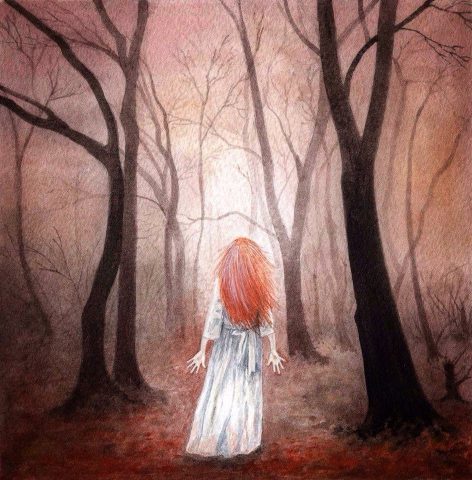
August
Delny Fitrzyk
Landscapes, views, skies, flowers and trees inspired by my surroundings and nature. All pieces include free machine embroidery as a mark making tool – on fabric or paper, then progressed using ink, dyes, watercolours combined with textures and details using a variety of techniques such as drawing, painting, stitch, collage, print and batik.
This exhibition combines old work from my travels with new work inspired by the wonderful Shropshire landscape.
Lindsay Bucknor
Exhibition title – Living Landscapes Exhibition
Born and bred in the Black Country art and photography came to me later in my life. Having spent most of my time behind a desk, creating successful images has become my passion. Being out there in nature, seeing things afresh has opened up a new and exciting chapter for me. I am inspired by my surroundings and never leave home without my camera. My passion is to create beautiful images.
I am thrilled to be able to share my work in this beautiful, historical setting. I have achieved recognition with several of my images over time, the most significant being a portfolio of 6 images which now hang in the critical care unit at New Cross Hospital, Wolverhampton helping bring calm to patients and relatives at a very stressful time.
I invite you to view and reflect on the images I have created and share my passion for the greatest artist or photographer of all – Mother nature herself.
All my work is available either here or online at www.lindseybimages.com

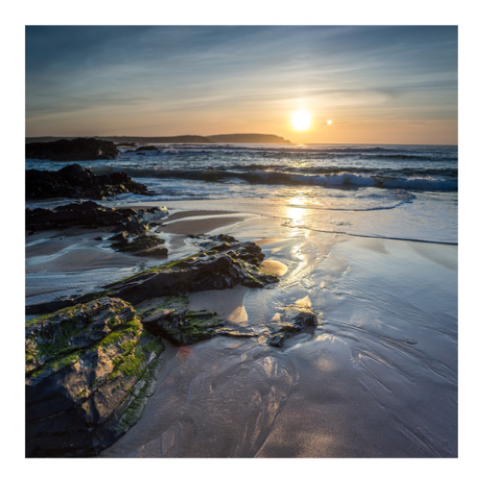
September
Victory Art Group
Victory Art Group is a group of local amateur artists, who meet weekly throughout the year to socialise and produce a wide range of artwork, in a wide variety of mediums. We are an untutored mixed ability group, who support each other in developing their skills. We have regular demonstrations given by professional artists, to which we welcome members of the public
Website:- victorypaintinggroup.co.uk
Facebook:- Victory Painting
October
Claire Cooper Walsh and Gill Price
Claire Cooper-Walsh
Title of exhibition: A Journey Through Colour, Texture and Theme
A vibrant and varied exhibition of work by artist Claire Cooper-Walsh, with pieces that feature the techniques of mixed media with oils, weaving, embroidery, quilting and fabric manipulation. Texture and colour pre-dominate in Claire’s work, along with underlying environmental themes as explored in her textiles
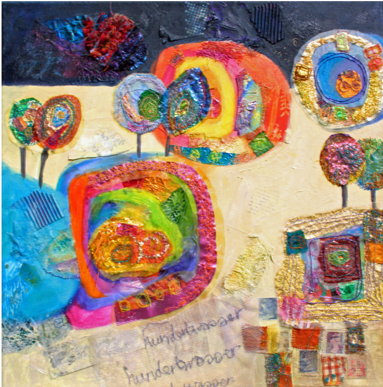
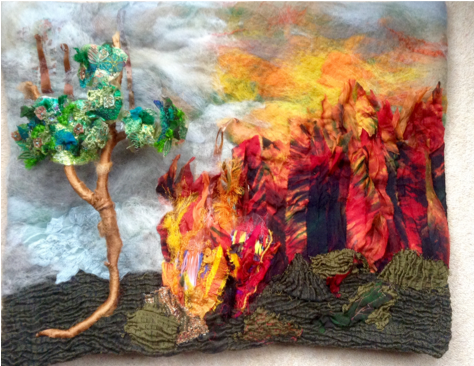
Gill Price
My enthusiasm for art began at an early age and the connection with fabric and textiles developed rapidly when I started to use a sewing machine to make my own clothes. I completed an Art and Design BA degree course at Bradford College, Yorkshire and later qualified as an art teacher in the 1980’s.As a textile artist, I gather inspiration from travelling and walking in the countryside and urban areas using photos and sketches as starting points towards the creative process in producing my work.
Often fabric that I initially dye or print on can also stimulate ideas by following the shapes and lines that have been formed. Free motion embroidery is the basis I use for drawing with thread, which helps to add detail and interest.
Currently, I continue to enjoy experimenting with ways of working and manipulating cloth and I am hopeful that this will lead to a range of possibilities for future work
A Tour of The Guildhall
Entrance to the building is gained by a door on the left situated under a passageway to the right of the Buttermarket in Wilmore Street. The Court Room and Council Chamber are accessed via a set of stairs. Visitors to the Guildhall are able to use toilet facilities.
![courtroom[1]](https://www.muchwenlock-tc.gov.uk/wp-content/uploads/2016/04/courtroom1.jpg)
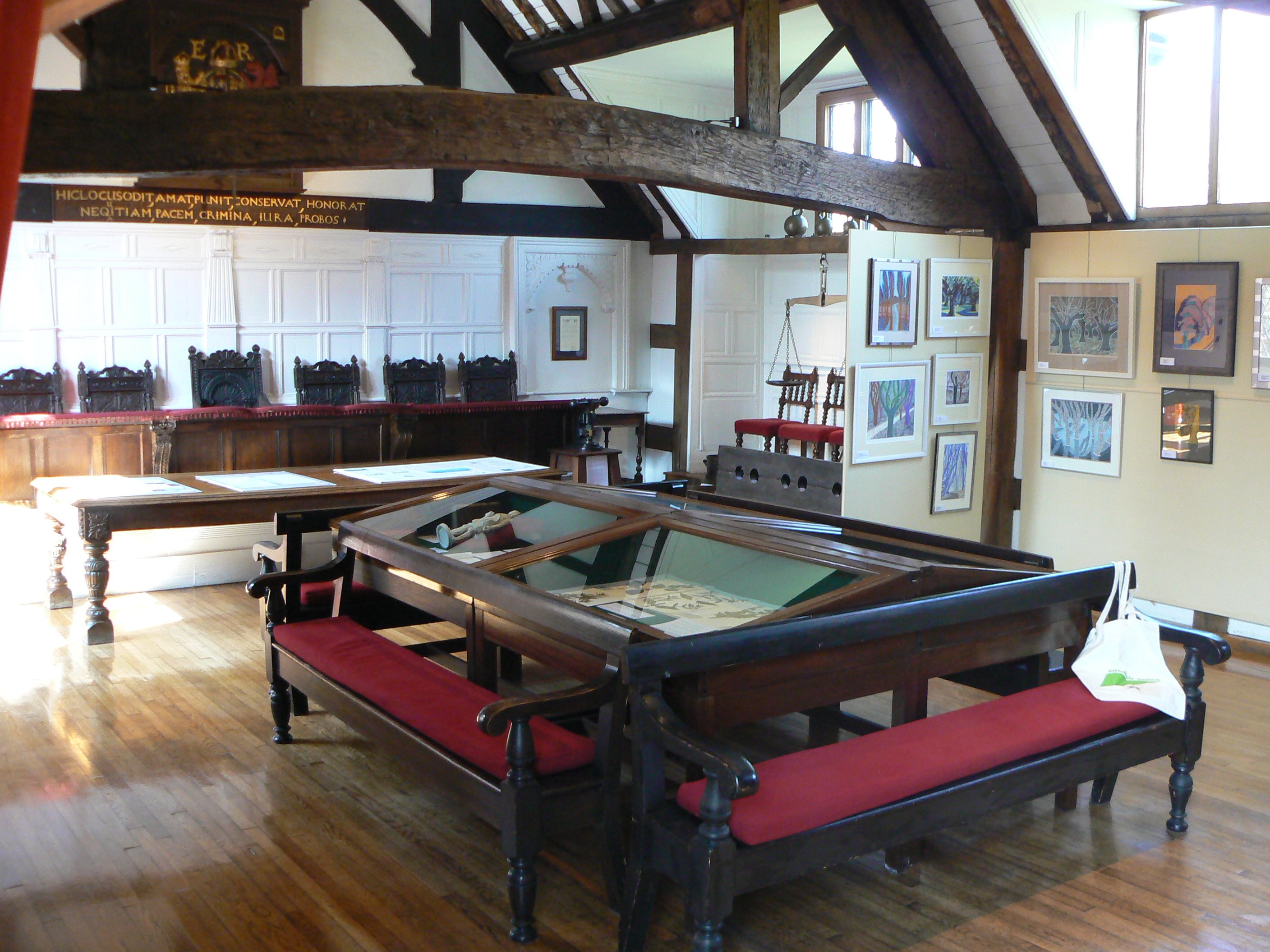
Court Room
The first room you enter was an active Court Room until 1985. It was built in 1540 after the dissolution of the Priory. Four types of court were held regularly: Petty Sessions and Quarter Sessions, a Bailiff’s Court and the Court Leet or Manorial Court. Bailiffs were elected from and by the burgesses. You can see the lists of the Bailiffs on the wall. In 1835 the role of Bailiff was abolished and replaced by that of Mayor. The Quarter Sessions were held under a Recorder, and within the first year, two felons had been sentenced to be hanged on the Wenlock Edge. The Coat of Arms that looks down on the Court Room is that of Queen Elizabeth the First, and bears the date of 1589. The Latin inscription beneath can be read as “This place abhors iniquity, loves peace, punishes wrongdoings, upholds the law, honours upright men”. Note the thrifty way a spelling mistake has been corrected! Small (petty) offences could be punished by a period in the stocks. The last offender to be sentenced was Thomas Lloyd in 1852. The standard weights and measures on display near the stocks were purchased in 1853 at a cost of £87 3s 6d.
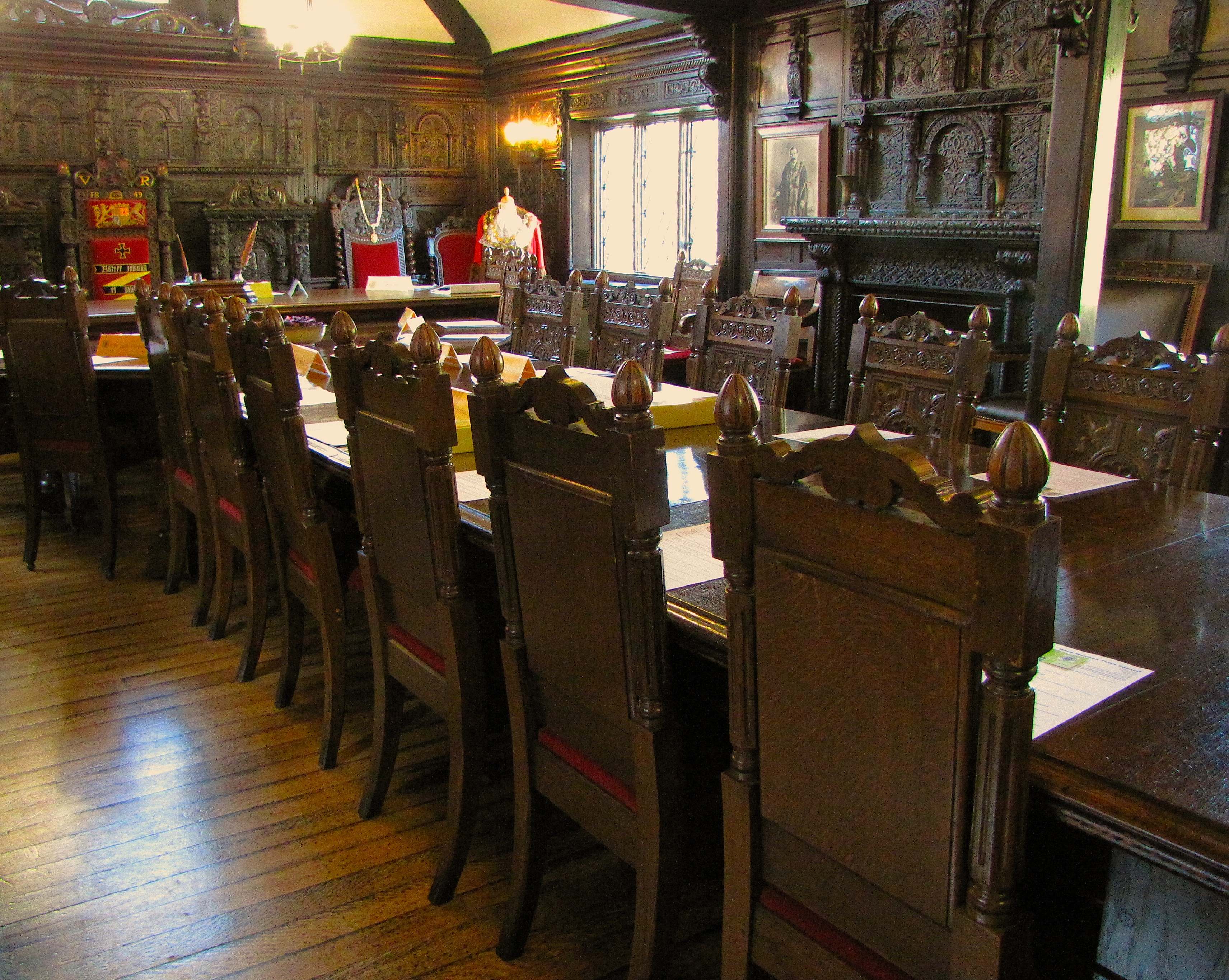
Council Chamber
The next room is the Council Chamber. In the Parish Register of 1577 the following entry appears “Upon the 23rd and 24th day of this month of September was reared the house over the prison house”.
The timbers had, of course, been cut, fitted and numbered beforehand, so that when the time came for ‘rearing’, all that had to be done was to fit and secure the timbers. Afterwards they would fill the panels with wattle and daub, and put the windows in place.
The Town Council meets every month in this Chamber. On the beam which faces the Mayor’s Chair, there is a Latin inscription which can be translated as “Give right judgement and exercise pity”.
Corn Market (also known as the Buttermarket)
The open space on the ground floor was the Corn Market until the Corn Exchange was built in the High Street in 1852. At the north end is the old ‘prison house’.
History of The Guildhall
WENLOCK received its Charter from Edward IV in 1468 granting Borough status with very wide-ranging powers, but until 1540 life continued to be dominated by the Priory. With the dissolution of the Priory, law and order became the direct responsibility of the Burgesses, and it was deemed necessary to build a Court House as a priority.
Richard Dawley, one of a family of carpenters, was entrusted with the work. The three-bayed free standing courtroom was erected in 1540. Access was by means of a stairway at the southern end and the ground floor, later used as a corn market, appears to have been open on all sides. Richard Dawley was paid £13 6s 8d for building the Court House (nails cost a shilling, the clock £1). Edward Brower was paid 13s 4d for roofing the belfry with lead and “wine given to various men as a reward” cost 4s 9d. Within a few months, two men were tried, found guilty of felony and hanged on the Edge Top.
In 1577 the Vicar noted in the Parish Register “upon the 23rd and 24th day of this monthe of September was reared the house over the prison house”. This was the present Council Chamber built partly over the medieval stone prison at the northern end, and extended to abut the previously free standing Court House. The timbers had been cut, fitted and numbered beforehand as was the normal practice with timber framed buildings. When the time came for ‘rearing’, all that was required was to raise and fit the framework together, secure the joints and fill in the panels and insert the windows.
1616 saw the building of an “inner room” in the Court House “ffor the more Comendable & safe keepinge of the Recordes of the Court and of the Recordes of the Sessons”. Conditions were far from ideal for Council meetings. In 1624 it was decided to undertake a major refurbishment of the building, including “Lattinge and plasteringe the Comon gaole overhead To Keep the Smoake and Nesty Smell” out of the Council Chamber. It was probably during this time that the two tall windows on the west side were inserted. A privy was also added to the Inner Room.
Extensive alterations were carried out in 1719-20. 8000 bricks costing £4 were bought for casing the east and south sides and part of the northern end of the building. A new cupola was built, new casements made by a local blacksmith, a new chimney built on a stone base, the roofs repaired and a new pillory provided. Nails on this occasion cost £6 13s 4d.
The interior of the Council Chamber was transformed in 1848, with the insertion of magnificent 17th century panelling, salvaged from an unknown local building. According to one report “it was panelled and furnished with carved oak of the most elaborate and costly workmanship principally at the expense of William Penny Brookes Esq.”
In 1868 the Borough Council decided to erect a retiring room and a water closet for the use of magistrates at the southern end over the passage to the churchyard. During the following year it was resolved “that the two cells under the Town Hall be thrown into the Butter Market” but in the event the northernmost cell was retained.
In 1891/2 further alterations took place at the southern end. The stairs were reversed to rise from east to west and then encased in brick and the existing entrance to the building formed from the churchyard passage. A major restoration of the Courtroom was found to be necessary by 1970. The brick casing was removed and the east wall timber framing renewed. Most of the furniture of the court was removed and a new central heating system installed.
For over four centuries this building was the administrative and judicial centre of the seventy or so square miles of the Borough of Wenlock. Justices of the Peace dealt with minor crimes in Petty Sessions, while the Recorder “one learned in the law” presided over the Quarter Sessions where more serious crimes were tried. The last Quarter Sessions was held in 1951; the Magistrates’ Courts continued until 1985. Two obsolete instruments of punishment can still be seen – the stocks last used in 1852 and the whipping post on the ground floor.
Although Wenlock lost its Borough status in 1966, it retained its Mayor and Town Clerk. The Town Council meets in the Council Chamber on the first Thursday of each month.

Vandalism or anti-social behaviour
Vandalism is an illegal, anti-social activity that creates a negative impression of an area and contributes to people’s fear of crime.
If you’d like to report any acts of vandalism to council property or anti-social behaviour, please call us on 01952 727509 or alternatively, contact Crimestoppers or the local policing team.
Telephone: 101 or 0800 555 111
Email: bmw.snt@westmercia.police.uk
How you can help us
- provide the names and addresses (if known) of alleged perpetrators involved and descriptions of them
- details of where the offence is being committed
- what times and how often
- the nature of the offence
![]()


